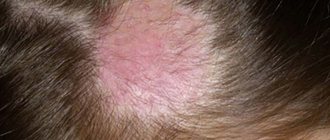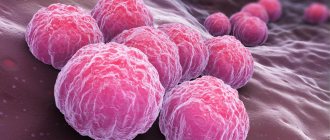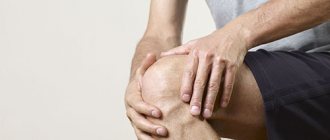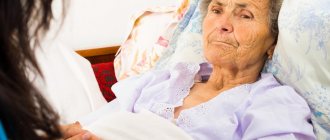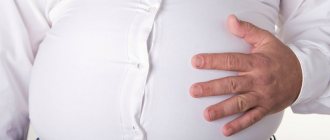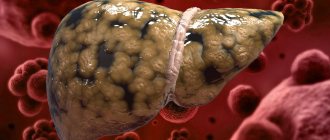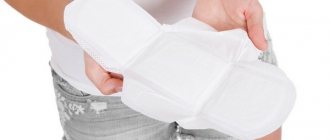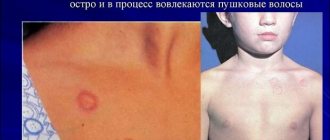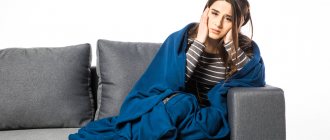Microsporia or ringworm is a highly contagious fungal disease that develops on the nails, skin and under the hair.
Treatment of pathology takes a long period of time and requires a competent approach to the choice of medications, because if therapy is ignored, the disease can progress, affecting large areas of the skin.
Ointments will help you cope with ringworm - a simple and effective remedy for the treatment of dermatological diseases.
Routes of infection
The common belief that you can get lichen from stray cats or dogs is only half true. In fact, the term “ringworm” refers to not one, but two skin diseases, each of which is caused by a specific type of pathogen - a dermatophyte:
- Trichophytosis, which is caused by Trichophyton fungi. They parasitize only on human skin and can be transmitted through direct contact, as well as through household and hygiene items.
- Microsporia, caused by the fungus Microsporum. This pathogen can affect both humans and animals, not only cats or dogs, but also hamsters, guinea pigs and even horses and cows.
Both pathogenic microorganisms are constantly found near every person in the air, on the soil, and on various objects. They are characterized by increased “survivability”, so they can withstand both high and low temperatures.
When fungi come into contact with the skin of a healthy person with a normal level of protective forces, they do not lead to disease, but are destroyed by immune cells or washed off from the body during hygiene procedures.
A person can only get ringworm if the following precipitating factors are present:
- low immunity, which may be a consequence of previous infectious diseases, living in environmentally unfavorable areas or the result of an unhealthy lifestyle,
- hypovitaminosis,
- the presence of open wounds, abrasions, scratches and inflammation on the skin, where infection can easily penetrate,
- maceration of the skin caused by prolonged contact with liquids, wearing shoes made of synthetic materials, and excessive sweating.
The risk group includes children attending preschool institutions and in close contact with each other . In adults, undecylenic acid accumulates in the subcutaneous layer, which is an antagonist to the pathogens Trichophyton and Microsporum, suppresses their reproduction and prevents infection.
Features of microsporia in children
Objectively, the clinical picture in an adult and a child is the same - characteristic spots, broken hairs. But the child more often develops an allergic reaction, in which the body temperature rises, itching, chills, and deterioration of the general condition are observed. Read more about ringworm in children in this article.
If in most patients the spots of microsporia are dry, and on the head as if sprinkled with flour, then in some children they are wet, suppuration occurs, and pain occurs when palpating the surrounding area. In this case, hospitalization is necessarily recommended.
Types of disease
Depending on the clinical picture, as well as the degree of damage to the skin and the possibility of relapses, the following forms of ringworm are distinguished:
- Superficial, in which the lesions are located on the body or head (on the face and under the hair).
- Nail - the disease in its advanced form can spread to the nail plates, leading to their separation and destruction.
- Infiltrate, or purulent - develops most often on the scalp, affecting the hair follicles.
- Chronic, which is characterized by relapses in adulthood. In the vast majority of cases, it occurs in women who suffered a superficial form of the disease in childhood. It worsens with nervous overload, stress, as well as against the background of diseases of the endocrine and genitourinary systems.
There is a classification based on the location of the lesion:
- scalp,
- face,
- palms and fingers,
- feet,
- armpits and inguinal folds,
- body surface,
- nails.
The incubation period from infection to the appearance of the first symptoms varies depending on the type of fungal pathogen and the method of infection.
Trichophytosis usually appears on days 10-14, and microsporia on days 5-7 if the infection occurred from an animal, and after 1-2 months when the fungus is transmitted from a person.
How do diseases similar to psoriasis manifest?
- Clinical manifestations of psoriasis
- Consider diseases similar to psoriasis Fungal infection
- Eczema
- Infection
- Lupus
- Lichen planus
- Seborrhea
- Differential diagnosis
Psoriasis is a disease that appears as a severe, thickened skin rash that covers areas of the body. The thickenings are red. At the site of their location, the patient feels severe itching, unpleasant, and sometimes painful sensations. Diseases similar to psoriasis exist.
Their manifestations are similar: itching, redness, thickening, keratinized areas of the skin. After the necessary tests and studying the clinical picture of the patient’s condition, the doctor can easily determine what skin disease has affected the patient. But it is easy for patients themselves to make mistakes in visual diagnosis.
Many skin diseases are very similar to psoriasis. In addition, certain medications can cause such symptoms. During an appointment with a doctor, the patient must indicate what medications he is taking or has taken in the recent past.
Clinical manifestations of psoriasis
Psoriasis is a chronic disease that results in thick red and white plaques on the skin, areas with white crusts. Localization of plaques - elbows, feet, back, tailbone, scalp. Psoriasis occurs most often in these places, but this disease can occur on any area of the skin, even appearing on the nail plates. During its acute form, the affected areas cause anxiety to the patient: peeling, severe persistent and temporary itching is felt.
Dead skin cells slough off and form plaques. Normally, skin cells divide and renew themselves every 30 days. With psoriasis, skin cells divide very quickly - every 6 days. This is why layering and the formation of hardened plaques occur.
Despite numerous scientific studies, the cause of this skin disease is not known to doctors. Scientists associate the appearance of psoriasis with the activity of the immune and central nervous systems. In other words, disruption of the body’s natural protective functions and the symbiosis of certain factors can affect the appearance of psoriasis. It is impossible to calculate the algorithms for the occurrence of the disease. Psoriasis is often inherited from parents to children. Psoriatic skin manifestations are not contagious.
Diseases similar to psoriasis are treated using standard medical regimens. Psoriasis is an individual disease. To prescribe treatment, the doctor conducts numerous examinations.
Small lesions are treated with steroid creams, which can only be purchased with a doctor's prescription. Natural detergents have a beneficial effect on the condition of the skin: tar shampoos and soaps, gels, creams and lotions. On the other hand, it is not recommended to treat skin affected by psoriasis with detergents. They can increase irritation and also remove the protective covering of already vulnerable skin. Short-term sunbathing also has a positive effect on skin with psoriatic manifestations. In the sun, such patients are recommended to use sunscreen with SPF, but apply the product only to healthy areas of the skin.
Psoriasis localized on the scalp should be treated with anti-dandruff ointments and shampoos. Severe psoriasis is treated with more serious medications that can be purchased with a prescription at the pharmacy. Additional treatment methods, irradiation with ultraviolet rays, are also used.
Psoriasis can develop from stress. Stress will not be the only factor that caused this disease. However, when the disease appears and begins to develop, stressful situations can become a trigger. Observations have shown that limiting stress has a positive effect on the dynamics of recovery from this disease and the appearance of remission.
Diseases that resemble psoriasis:
- skin fungus;
- infectious lesion (bacterial);
- eczema;
- allergic manifestations on the skin;
- dermatitis resulting from friction of skin areas against each other. As a rule, it occurs in people who are overweight. Based in the buttocks area, inner thighs;
- red lichen planus;
- skin cancer;
- cutaneous tuberculosis.
Consider diseases similar to psoriasis
Fungal infection
The second name for the disease is fungus. The fungus affects the skin, most often appearing in the area of the feet or groin, nail plates and scalp. The most common fungal infections are ringworm, athlete's foot, nail fungus and many others.
The fungus is treated with local methods: as a rule, a cloth soaked in medications is applied to the affected areas. Severe forms of fungus are destroyed by more serious medications. Practice has shown that it is necessary to treat fungus (its varieties: mold, yeast), because it goes deep under the skin and causes other health problems.
Eczema
The disease has symptoms similar to psoriasis. The skin with this disease is affected on the head, arms, legs, back of the neck, elbows, etc. With the exception of an allergic reaction to topical products (material, cosmetics, food, stress), the causes of eczema are not yet known to science. Symptoms of this disease include itching, rash, blisters with fluid, and scaly areas of skin with indurations.
Eczema is easier to prevent than to treat. It is necessary to exclude allergic foods from consumption, avoid stress and anxiety. The disease is inherited. The patient may feel unbearable itching and a desire to scratch the rash, but this should not be allowed. One type of eczema is atopic dermatitis.
Infection
Bacterial infections have symptoms similar to psoriasis. An infection begins due to bacteria entering the body. Treatment is with antibacterial drugs (antibiotics). First, pathogenic bacteria enter the body, then a viral infection appears. It happens, on the contrary: a bacterium is added to the virus. If there is no improvement in the treatment of a viral infection within 10 days, there is a high probability that the virus has combined with bacteria.
A bacterial infection can affect the lungs, genitourinary system, fistulas, and ear areas. Among the most common infectious diseases are sinusitis, pneumonia, and pharyngitis. It is imperative to treat a bacterial infection, as there is a risk of its spread through the bloodstream.
Lupus
Ringworm can be treated with topical medications (ointments) to relieve itching and flaking. Severe forms of the disease are treated with drugs that must be purchased with a doctor's prescription and taken orally.
Seborrhea
Seborrheic dermatitis of the scalp and glabrous parts of the skin is a disease that also has symptoms similar to psoriatic symptoms. This disease is most often localized on the scalp, in the area above the eyebrows, and on the back of the neck. Less commonly, seborrhea occurs on the chest and back - where a large number of sebaceous glands are located. Seborrhea causes severe dandruff and hair loss, which is very difficult to stop. Symptoms: red scaly spots, plaques, crusts, dandruff.
The appearance of seborrhea is promoted by stress, hormonal disorders during puberty, and unhealthy diet (consuming large amounts of fried, spicy, alcoholic drinks). To treat this disease, the patient uses topical creams and shampoos aimed at getting rid of dandruff. This disease is only partially similar to psoriasis: psoriatic spots have a thicker structure and a bright red color.
Symptoms of the disease
In order to consult a doctor in time and begin treatment for ringworm, it is important to know what the lesions look like in different parts of the body.
You can recognize the disease on the head under the hair by the following signs:
- in the initial stage, one or several round or oval-shaped areas with thinning hair appear, the skin on them begins to peel off and small scales form, which can be mistaken for dandruff,
- the hairs break off at a distance of 2-3 cm from the surface of the skin, and their remains are covered with a white-gray coating,
- redness of the skin is observed, and vesicles with serous exudate are formed along the perimeter, in place of which yellowish crusts appear.
At the first stage, a person does not experience any particular discomfort other than itching and flaking, so he does not always pay attention to them and consults a dermatologist only after bald spots appear on his head.
The symptoms by which one can recognize ringworm on the body in a person are as follows:
- single or multiple round-shaped spots appear on the skin, having a bright pink color,
- at the edges of the areas are surrounded by a roller of small bubbles filled with liquid,
- the skin becomes covered with small scales, itches and flakes,
- the spots grow in size and their number increases.
In the infiltrate form of the disease, small tumors appear on the scalp, protruding above the surface, from which pus oozes.
Symptoms include severe pain, itching, and sometimes increased body temperature. Over time, the lesions become covered with dirty gray crusts with a loose structure. Possible enlargement of lymph nodes, the appearance of a rash and other manifestations of allergic reactions.
Prevention of ringworm
Prevention includes maintaining good personal hygiene and isolating sick animals or people. At the place where the patient is identified, thorough disinfection is carried out, bed linen and accessories, soft toys, and carpets are subjected to heat treatment. A sick child is not allowed into the children's group until the ringworm is completely cured. Patients are prohibited from visiting swimming pools, saunas, and baths. Kindergarten teachers, nannies, utility workers, and bathhouse attendants are suspended from their duties.
Is ringworm dangerous for humans? The most serious consequences are persistent alopecia areata due to scarring of the skin tissue. The disease should be treated as soon as it begins to manifest itself in order to prevent infection of the immediate environment and reduce the risk of developing a severe allergic reaction.
Diagnostics
You can quickly get rid of ringworm if you consult a doctor at an early stage of the disease and start treatment in a timely manner. In order for therapy to be effective, it is important to determine which pathogen caused the fungal infection. To do this, a skin scraping and several hairs are taken from the patient and their biochemical and microbiological examination is carried out.
In addition, it is necessary to differentiate, since the signs of ringworm are similar to the symptoms of diseases such as psoriasis, eczema, and ostiofolliculitis. This can only be done based on the results of laboratory tests.
Once the correct diagnosis has been made and the causative agent of the disease has been identified, the patient is prescribed treatment with antifungal drugs.
Treatment methods
Ringworm in humans - treatment is carried out by a dermatologist, who, after examining the patient and the results of the cultural method, will be able to determine the type of pathogen. Therapeutic therapy should be carried out comprehensively and be aimed at eliminating the fungal infection, increasing immunity and preventing the progression of the disease.
Therapy for ringworm involves taking local and systemic antifungal drugs, which are available in different pharmacological forms, have different compositions, but the same mechanism of action, which is aimed at eliminating the pathogen and reducing the symptoms of the disease.
Local antifungal drugs are applied directly to the site of inflammation of the disease. Such drugs are produced in the form of ointments, creams, shampoos, lotions: Miconazole ointment, Clotrimazole, Lamisil, Dermazol shampoo, Nizoral and others. To treat foci of the disease, sulfur-tar ointment and Vidal's milk are used. Systemic treatment consists of oral antifungal drugs. The drug "Griseofulvin" is considered quite effective. The course of treatment may take up to 1 month. If a secondary infection is suspected, the patient may be prescribed antibacterial therapy. In addition to the standard treatment regimen, patients are prescribed vitamins and immunostimulants.
During treatment, you need to take scrapings for fungus. The results of the analysis will determine the effectiveness of treatment therapy. The prognosis after treatment of ringworm in 85% of cases is quite favorable, but with improper or ineffective treatment, the disease can become chronic. In addition to taking medications, a person suffering from ringworm must take care of personal hygiene and change bed linen daily. A person suffering from ringworm must be isolated during treatment, since this disease is quite contagious and can be quickly transmitted to other family members.
Therapy
Depending on the type and stage of the disease, the course of treatment for trichophytosis and microsporia ranges from 30 to 45 days. Lesions in the infiltrate form will take a particularly long time to heal.
As a rule, a complex method of therapy is used, including oral administration of antimycotics in tablets and the application of external ointments or solutions.
The most effective systemic medications for microsporia and trichophytosis are:
- Griseofulvin,
- Orungal,
- Lamisil,
- Atifan,
- Terbinafine.
These tablets should only be taken as prescribed by a doctor, since each medication can cause adverse reactions and has contraindications for use. In particular, they are not recommended for young children, pregnant women and women during breastfeeding.
Topical medications will help cure a dangerous disease; the following are most often prescribed:
- Exoderil,
- Mycosporus,
- exifin,
- Nitrofungin,
- Salicylic ointment,
- Sulfur-tar ointment,
- Mycoseptin.
In addition, to quickly get rid of the fungus, the doctor may prescribe physical procedures - electrophoresis, ultraviolet irradiation, high-frequency current therapy.
General treatment recommendations
- In case of an advanced form of the disease and the appearance of several spots on the head, it is recommended to shave the hair and repeat this throughout the course of treatment.
- Every day they wash their hair with antifungal shampoos - Betadine, Nizoral, etc.
- After washing and drying, the wounds are treated with iodine, Yoddicerine or Vocadine. Iodine works best against fungal colonies.
- In the morning and evening, antifungal ointment or gel is applied to the lesions. For prevention, 1 time per day in the evening before bedtime.
- Be sure to pre-prepare the skin for application - the faster the active component is absorbed, the sooner recovery will occur.
Complications
Ringworm is a dangerous, but not fatal disease, but it cannot be ignored, as it is fraught with serious consequences:
- A superficial lesion can become purulent and cause inflammation and death of hair follicles, after which this area will never be covered with hair.
- The disease becomes chronic and relapses will occur throughout life. This is especially dangerous for women.
- The presence of a fungal infection in the body will lead to weakened immunity.
Self-medication with home remedies and medications can temporarily stop the development of the disease, but if the provoking factors mentioned above occur, ringworm may reappear on the body or head. Therefore, the best way out is to see a doctor and follow all his prescriptions.
Is it possible to cure dermatitis in humans with the ointments themselves?
To eliminate the root cause of the pathology and its external signs, the patient is prescribed antifungal tablets, antiseptic solutions and shampoos, however, local treatment of the disease is often carried out using ointments - they are convenient to apply, since they have a thick consistency and do not spread.
After application to the affected areas, the product in the form of an ointment remains on the skin for a long time, having a beneficial effect on the affected skin.
It is impossible to completely cure the disease in this way, but with the use of complex therapy, the chances of a quick recovery increase.
Important!
Incorrectly chosen treatment can significantly aggravate the course of the disease, as a result of which ringworm can develop into a severe form.
Hygiene and rules of behavior during treatment
The effectiveness of therapy for trichophytosis and microsporia depends not only on medications, but also on strict adherence to hygiene measures. This applies not only to the patient himself, but also to those who are in direct contact with him.
The main recommendations include the following:
- Provide the patient with individual bed linen, towels, napkins, combs and other personal items.
- Wash bedding and clothes of a sick person separately, pre-soaking them in disinfectant solutions.
- In the room where the patient is located, remove carpets and cover upholstered furniture with polyethylene covers. Regularly ventilate the room and carry out wet cleaning.
- If the lesions are located under the hair, then the patient needs to wear a scarf or a light cap. If lichen is located on the body, you should wear underwear made from natural fabrics and change it every day.
- When washing your hair, you can, in consultation with your doctor, use special shampoos - Nizoral, Keto Plus, Ketozoral. It is best to use tar soap to wash your skin.
The listed measures must be followed until the fungus is completely eliminated. Only a doctor can determine this after a new series of laboratory tests.
Features of treatment on the head
Lesions in the hair make it difficult for the medication to reach, and the hair itself acts as a conductor for spores. Along with ointments, gels and creams, antimycotic tablets for ringworm are always prescribed. The active substance is aimed at destroying the fungus in the patient’s body and preventing relapses.
- Griseovulfine, an active substance derived from the fungus Penicillinum nigricans, has a fungistatic pharmacological effect - it inhibits the growth and reproduction of fungal cells. The dosage is determined according to the weight and age of the patient. The course of intensive treatment is 14 days, and the same amount of time is spent on preventing relapse.
- Orungal is a synthetic antifungal agent based on itraconazole, which destroys the cell membrane of the fungus and destroys the entire colony. Dosage according to age (not younger than 3 years). For adults, the standard dosage is 100 mg per day after meals. The course of treatment is 14 days.
- Lamisil is the active substance terbinafine. The medicine has a minimum of side effects; terbinafine does not depress the general condition of the patient and does not cause allergies. Prescribed for children over 2 years of age and adults.
- Mycozoral is the best remedy for the treatment of lichen based on ketoconazole in the line of antifungal drugs. Destroys spores of all varieties, including streptococci and staphylococci, prevents relapse. The course of treatment is determined by the doctor, taking into account the specific situation.
Along with the tablets, the doctor prescribes a local gel and shampoo or ointment.
There are certain nuances in the treatment of microsporia on the scalp. The hair at the site of the lesion is shaved to zero or removed with sterile tweezers. Fungal spores live not only on the skin, but also in the hair, and if they are not removed, relapse cannot be avoided.
The stains are pre-wiped with a furacillin solution. After the crust has softened, it is removed with a spatula, furacillin is applied again, and only then ointment or gel is used.
Prevention
Measures to prevent mycosis were developed taking into account the fact that ringworm can be caused not only by animals, but also by people, as well as by any objects on which pathogenic fungi are located.
- Do not use other people's combs, hairbrushes or hairpins, wear only your own hats.
- Always wash your hands thoroughly with antibacterial soap after coming home.
- When in public places, wipe your hands often with damp disinfectant wipes.
- Before visiting a sauna, steam bath or swimming pool, apply an antifungal solution to your hands and feet.
- Pets should be regularly examined by a veterinarian, and if lichen is suspected, vaccinated with special preparations.
You also need to take care of increasing your immunity - give up bad habits, eat right, exercise, and spend more time in the fresh air.
Solutions for the treatment of microsporia on the head
The solutions are quite convenient to use specifically on the scalp, where it is difficult to reach with cream or ointment, especially since after treatment the hair becomes oily.
- Yoddicerin is an antiseptic, relieves inflammation, has an analgesic effect, and works as an antibacterial agent;
- Nitrofungin is an effective broad-spectrum antifungal drug that has antiseptic and disinfectant effects, thereby suppressing fungal growth;
- Vokadin is a drug that has an antiseptic effect based on a non-toxic synthetic polymer and iodine. Ionized iodine inhibits the activity of fungi and spores.
Effective ointments for lichen in children
The most common and effective ointments for lichen in children are in the list below; you can choose them without fear of causing harm to health:
- Sulfuric – eliminates fungi, heals wounds, contains sulfur, water, petroleum jelly. Cheap ointment, contraindications for use are allergies and intolerance to the components.
- Terbix - prescribed from the age of two, kills fungi.
- Lamisil – eliminates pathogens, suppresses the growth of infection. Appointed from age 12.
- Ichthyol is a popular antifungal ointment. Treats pityriasis, multicolored subtypes.
- Sinaflan - treats pink and red lichen planus, prescribed from two years of age.
Clotrimazole for children
The popular drug Clotrimazole for children is used to eliminate fungal dermatoses. It is especially effective in the treatment of pityriasis versicolor, caused by yeast-like fungi. Before use, you should clean your skin with soap and water, carefully rub in a thin layer of cream, repeat up to four times a day. The course of application is from a month to 2.5. The drug is approved for children of any age and has an affordable price.
Zinc ointment
Zinc ointment, which is a mixture of zinc oxide and petroleum jelly, is considered one of the safest. Effectively treats ringworm and rosacea, applied to washed dry areas up to six times a day. Duration of use - until symptoms disappear completely. The ointment eliminates inflammation, dries, regenerates the skin, is inexpensive, and acts in the upper layer of the epidermis.
- How to treat pityriasis rosea in children and adults - medications and folk remedies
- Means for the treatment of lichen in humans
- Ringworm on the face - types and causes, symptoms and treatment in children or adults
Akriderm
A corticosteroid ointment that helps relieve itching and irritation is Akriderm for lichen. It is applied twice a day to the infected areas, the duration of treatment is prescribed by the doctor individually. Akriderm cream is not used until the age of two, for chickenpox, bleeding wounds, tuberculosis and syphilis. Eliminates symptoms within two weeks.
Acyclovir
Acyclovir against lichen caused by fungi helps eliminate blisters, itching and burning. Ointment in a concentration of 1 or 5% is suitable for treating the vesicular type of disease at the very beginning of its appearance. It is better to apply the virus-destructive drug with gloved hands or cotton swabs, without contact with the bubbles, up to five times a day. You need to use it until the rash disappears completely.
Vishnevsky ointment
Vishnevsky’s ointment for lichen is considered to be a simple in composition and effectively effective drug. A surgeon invented it by combining tar and xeroform with castor oil. Liniment improves blood circulation in tissues, has antiseptic properties, softens the skin, accelerating the process of its regeneration. Suitable for eliminating ringworm, it has contraindications in the form of individual intolerance to the components.
Pregnancy and lactation
The body of a woman who is expecting a child is especially vulnerable to various types of viruses, microbes, including fungal diseases. During pregnancy, immunity is reduced, so there is a high risk of infection.
If ringworm is diagnosed, you should notify your doctor about your delicate condition. All further course of treatment should be based on pregnancy. Moreover, you should not get carried away with folk remedies , since their effect on the fetus has not been adequately studied.
The same rules apply to those who feed a newborn with breast milk.
Typically, pregnant and lactating women are prescribed:
- antiviral agents of general and local action;
- ointments, gels or creams for external use.
How to recognize lichen in time?
Ointment for ringworm on a person’s skin will definitely be needed after diagnosing the disease. Timely identification of the type of lichen allows you to begin a drug fight against it, guaranteeing a speedy recovery.
In order to recognize the disease in time, you should pay attention to the symptoms characteristic of all its forms:
- the appearance of inflamed lesions on the body;
- disruption of normal skin pigmentation in those places where lichen spots appear;
- the occurrence of itching accompanied by pain;
- peeling of the skin;
- hair loss.
Patient hygiene
Ringworm poses the greatest threat to anyone who comes into contact with a sick person, so quarantine must be observed during the illness. In addition, you have to adhere to safety precautions that prevent the infection from spreading throughout the room and spreading it to other parts of the body.
- Treatment of lesions should be performed using medical disposable protective gloves.
- All patient towels must be disposable.
- Washing clothes should be carried out at a temperature not lower than ninety degrees (or better yet, boil the laundry).
- After washing, linen and clothes are ironed with a hot iron.
- The patient needs to change bed linen at least twice a week. Used linen must either be destroyed or thoroughly disinfected.
Folk remedies against lichen
With all due respect to traditional medicine, by itself it is not able to cope with pathogenic flora, but it perfectly improves the patient’s condition.
The most popular ingredients are:
- dark seedless raisins - rub on the spots 5-7 times a day. The effectiveness is noticeable within a week.
- garlic and honey - rub the paste over the affected areas and leave under a bandage for several hours;
- lemon - acid inhibits the activity of fungi, lotions from pure lemon juice are made twice a day and left under a bandage for 3-4 hours;
- 25% propolis tincture - improves the condition in just 3-4 days, for which you need to do compresses in the morning and evening;
- vinegar - the principle of action is the same as that of lemon, compresses are made 5-6 times a day and must be left under a bandage for 2-3 hours.
Shampoos
Shampoos are an excellent complementary treatment for fungal scalp damage. You can get rid of pathogens using shampoos:
- Nizoral;
- Sebozol;
- Keto Plus;
- Ecoderm.
Each of the listed shampoos has an antifungal effect and inhibits the spread of the pathogen in the affected area. Shampoos contain the antifungal substance ketoconazole, which actively resists the growth of fungal colonies. The product is safe for external use, but it is not recommended for use by young children, women during pregnancy and lactation, or for preventive purposes.
Treatment for ringworm is long-term. You must be prepared to use several types of drugs in order to fight the disease as effectively as possible. Only complex therapy will help cure mycotic scalp lesions.
Classification
The disease can occur according to one of the described types:
- Infiltrative - the inflammatory element has a clear expression, a cluster of spores is faintly visible, but at the level of 3 mm a hyperemic area appears;
- Infiltrative-suppurative - has a more pronounced expression of inflammation, the hyperemic area rises above the skin up to 4-5 mm. In the same area, blisters form, containing purulent fluid inside. Remains of broken hair are easily removed by pulling; they are affected by purulent crusts. In advanced stages of the disease, painful ulcers may form in the deep layers of the skin, intoxication of the body occurs, and the temperature rises;
- Exudative - blisters filled with serous fluid form in the affected areas. Over time, they burst, the liquid covers the skin and glues the dead scales together, thus forming a yellowish crust. Removing these crusts exposes moist areas of infection;
- Trichophytoid is a sluggish process, scattered over the entire surface of the head. Small foci of the disease either form small bald patches or are absent altogether and do not bother their carrier;
- Seborrheic - received its name for its similarities with seborrheic dermatitis. This type of lichen does not form a receding hairline and does not break hair, but it helps to thin out the hair. There is a sluggish course of the disease, there are no obvious foci, and there are no boundaries of spread.
Advanced stages of the disease contribute to the deterioration of the patient’s condition and lead to hypertrophy of the lymph nodes.
Symptoms and first signs
In an adult, the symptoms of ringworm may vary somewhat, depending on the location of the infection, the disturbances in the immune system and its ability to cope with the disease.
1) Ringworm is superficial, affecting smooth skin. Often this type of ringworm can be confused with ringworm rosea, but there is one significant difference between them - ringworm rosea never affects the hands, feet and face. Ringworm, in turn, can occur on any part of the body. In addition, pityriasis rosea will not last more than 8 weeks, but ringworm can bother a person for many years, often changing from remission to exacerbation.
Symptoms of the superficial form of ringworm, which affects smooth skin, are:
- A bright spot with clear boundaries. The borders themselves will be raised above the skin, forming a small ridge. It consists of blisters and papules of a pinkish tint. The middle of the spot is lighter, covered with skin scales. If the disease is not treated, the spots may grow.
- The patient will experience itchy skin.
Most often, superficial lichen occurs on the smooth skin of the neck and face, and often appears on the lower extremities and torso.
2) Ringworm is superficial with localization on the scalp. Most often, infection occurs through contact with a sick person or through interaction with an infected animal. If superficial lichen of the scalp is not eliminated in childhood, then there is a danger of it becoming chronic after puberty in a female child. In boys aged 13-15 years, untreated superficial lichen of the scalp most often goes away on its own.
Symptoms of this type of ringworm are:
- A single area or multiple affected areas with hair thinning. Such lesions have a round shape.
- Areas of flaky skin may appear on the face, the scales of which are grayish or white. They are very similar in appearance to dandruff.
- The more actively the microorganisms that cause lichen begin to multiply, the more hair begins to break. Over time, the area looks as if the hair on it was cut at a level of 1-2 mm from the skin.
- The edges of the affected area are surrounded by small bubbles. After they burst, a yellow crust forms in their place. The skin itself may be slightly hyperemic.
- The affected areas have a large diameter and can reach 10 cm, and sometimes exceed this figure.
- Itching with the superficial form of ringworm is most often not observed. If it does occur, it has a fairly mild degree of severity and does not cause discomfort to the person.
A patient with superficial lichen experiences greater psychological discomfort, as his appearance is seriously affected.
3) Ringworm in chronic form. The chronic form of ringworm in adulthood can be found exclusively in females. The disease develops against the background of an untreated infection in childhood and worsens when the functioning of the ovaries and thyroid gland is disrupted. The impetus can also be a general decrease in immune strength and hypovitaminosis.
The symptoms of chronic ringworm are as follows:
- The affected area is the scalp (mainly temples and back of the head), smooth skin (mainly elbows, buttocks, thighs, palms), nail plates.
- When the area with hair is affected, the rods themselves break at the root. The lesion does not grow more than 10 mm, there is no inflammation, and over time a scaly scar forms.
- When smooth skin is involved in the process, the spot does not have clearly defined boundaries and can reach large sizes. The color of the spot can be any shade, from pink to bluish. Chronic rashes always itch and flake.
If the nail plate is involved in the pathological process, then first of all its color changes. It transforms from light pink to grey. The nail becomes cloudy, dull, and begins to crumble. There are two possible options for changing the nail plate: it becomes either thinner or thicker.
4) The infiltrative-suppurative form occurs, as a rule, in immunocompromised patients or with incorrect (usually independent) treatment of the disease.
The lesions in this case are intensely hyperemic (pronounced red-pink color), edematous, covered with small blisters with purulent contents, the pyogenic flora also penetrates into the hair follicle. When the blisters open, they become covered with crusts that are tightly fused to the underlying skin and bleed easily if accidentally injured.
When pressing on the hair follicle or when removing the affected hair with tweezers, purulent contents are released.
Diagnostic methods
An important point in determining the choice of treatment is diagnosis. It includes the following methods:
- Visual inspection.
- Compiling an anamnesis.
- Instrumental research.
- Laboratory research:
- microscopic method - studying samples from lesions under a microscope makes it possible to identify mycelium in their scales in the form of mycelium threads; this method is very effective because it very clearly detects the presence of flexible spores in the hair;
- cultural method - allows you to detect the growth of a fungal colony in the form of a white lump on the 5-6th day after sowing.
Microsporia
The difficulty of treating microsporia lies in late diagnosis. Symptoms do not appear immediately and in the early stages may resemble an allergic reaction. Its superficial forms do not cause itching or burning, which also becomes a lulling factor. Therefore, the best way to avoid serious complications is to be attentive to your health and contact specialists for advice, even with seemingly minor changes in health.
The peculiarity of microsporia is that it can last for several years. Sometimes in children, for example, it does not have a pronounced form, does not cause concern, and the patient does not receive proper treatment. And if in boys aged 13-15 years, in most cases, self-healing occurs and the disease can go away forever, then in girls it becomes chronic. Chronic microsporia occurs only in women.
Anti-fungal products
Modern medicine offers more and more drugs for fungal skin infections, the most popular of which are ointments for lichen in humans.
Let's look at the names of the most popular remedies that help fight this disease:
1. Among the ointments for lichen on human skin, we note the following names:
- Miconazole is an antifungal drug that effectively treats lichen versicolor. The product should be applied to human skin twice a day until complete recovery;
- Mikoseptin is a good ointment against lichen, based on zinc. The product has a calming effect on the upper layers of the skin and also fights irritations. This drug is used to combat ringworm;
- Exoderil - this anti-lichen ointment has a therapeutic effect against pityriasis versicolor, as well as ringworm. The drug contains the functional component naftifine, which prevents the development of the inflammatory process on human skin;
- Zalain is an ointment for lichen, the active components of which have an antifungal effect;
- Clotrimazole is an anti-lichen ointment for people, which is recommended for the pityriasis form of fungal infection. This product is an antimycotic drug that is characterized by a wide spectrum of action. Apply the ointment twice a day in a thin layer. The duration of the course of therapy is determined by a dermatologist. Also, this ointment for lichen in humans can cause side effects, including local burning, swelling or slight itching;
- Lamisil is an ointment for lichen on human skin, the active components of which have an antimicrobial effect. We also note that this remedy has a number of contraindications, so whether it is possible to treat the fungus with this particular drug - only a doctor can tell you;
- Terbinafine is a treatment for pityriasis fungus. This drug should not be used on children or pregnant women;
- Zovirak is an ointment that is most effective against shingles fungus. The active substance in this drug is acyclovir;
- Tsitsunbasyuan is an ointment for lichen, the most effective in the fight against pityriasis and tinea fungus. Relieves inflammation, eliminates itching, destroys pathogenic bacteria, has excellent penetrating ability, improves blood circulation and metabolism of affected tissues;
- Ichthyol ointment is effective for lichen planus. Relieves itching, has an antimicrobial effect, as well as anti-inflammatory. Available without a prescription;
- Hyoxysone - the active ingredient is hydrocortisone. It has anti-inflammatory and antimicrobial effects, and is effective in the treatment of pityriasis rosea. However, if a person has a weakened immune system and an infection has occurred, then it is necessary to additionally use Levomekol ointment or salicylic alcohol to prevent the development of serious adverse reactions.
2. Shampoos against fungal skin lesions:
- Nizoral is the most effective treatment for scalp lichen. This drug is an indispensable component of complex treatment of various types of fungus. Moreover, Nizoral perfectly eliminates dandruff. The product contains ketoconazole, which has an excellent antifungal effect;
- Sebozole is an analogue of Nizoral. Effective for yeast and fungal infections of the scalp. It is suitable for any hair type and also has a good effect on their aesthetic characteristics. Typically, Sebozol is used to treat tinea versicolor or seborrheic psoriasis;
- Ecoderm - the active components of this product have a destructive effect on fungal organisms. It is recommended to use this drug in conjunction with the two shampoos described above;
- Keto-plus - helps cope with pityriasis fungus. In addition to the zinc component, the composition contains ketoconazole. This combination allows you to effectively combat pathogens of skin lesions. Moreover, the shampoo moisturizes, nourishes and softens the scalp, and also creates conditions under which pathogenic fungi can no longer reproduce.
3. Alternative drugs:
- sulfur ointment for lichen - is a time-tested, effective remedy that helps cope with skin ailments. The main active component of the ointment is sulfur, which has a persistent anti-inflammatory effect. Treatment can be supplemented with salicylic ointment or tar;
- Fungibak Yam is a medicinal product that is also effectively used to treat people. According to the instructions for use, yam bk ointment for lichen is indicated for humans in cases where a child or adult became infected from an animal.
The best remedies for fungus
Sometimes fungal skin infections are very difficult to get rid of. Let's consider the most popular and effective means that help overcome this disease:
- Clotrimazole - quickly eliminates fungal membranes at the site of skin lesions, and also instantly causes the death of microorganisms. The product acts very quickly and effectively, and the most noticeable effect can be seen in the treatment of pityriasis versicolor, which is caused by a fungus of the genus yeast.
- Sulfur-salicylic ointment - is Salicylic acid with Sulfur, the combination of which has antimicrobial and antiparasitic effects. It is also appropriate to use only salicylic or only sulfur ointment. When in contact with the skin, sulfur has an antimicrobial effect, and salicylic acid has an anti-inflammatory effect.
- Exoderil - the main active ingredient is Naftifine. The composition is quickly absorbed into the skin, while forming a powerful antifungal concentration. That is why it is enough to apply the composition once a day. Result: good anti-inflammatory effect, as well as elimination of itching. The drug is effective for ringworm and ringworm.
Products for children:
The child's body is the most vulnerable to the effects of various drugs, so you need to be especially careful when choosing drugs for your child. Let's look at ointments for lichen that can be used for children:
- Lamisil - the drug has an antifungal effect and is used for topical use. A characteristic feature is a wide range of antifungal activity. It copes most effectively with versicolor.
- Mycoseptin - used to treat superficial forms of fungi, including localization of infection in the perineum or interdigital areas. It is possible to use the drug for preventive purposes, as well as for irritation and diaper rash of the skin.
- Ketoconazole - used for fungal infections of the skin, nail plates, hair, vagina, and genitourinary organs. The product is often used to prevent fungal infections if the body has weak defenses.
Where can I buy
| Pharmacy | Address | A drug | Price, rub |
| Online pharmacy No. 1 | Moscow, , Bumazhny proezd 19 building 3 | Clotrimazole | 56 |
| Petropharmacy | St. Petersburg, Kamennoostrovsky prospect, 42 | Lamisil | 469 |
| Brizfarm SOOO Pharmacy No. 3 | Minsk, st. Belskogo, 2, room. 4H | Ketoconazole | 150 |
| Viridis Pharmacy | Kyiv, st. Yaroslavskaya, 26 | Miconazole | 22 UAH |
Modes of transmission and risk factors
This disease is dangerous not only because of the harm it causes to the body, but also because of the ease of transmission to others. It is considered more contagious than pityriasis versicolor. People in contact with the sick person are at serious risk of becoming infected if they do not follow protective measures.
Infection occurs when particles of skin or hair infected with a fungus come into contact with the skin, that is, through the contact-household method:
- from person to person through touch and household items - clothes, hats, combs, underwear and other hygiene and household items;
- from an animal infected with a fungus to a person by contact or through the household method through objects with which the animal has been in contact (blanket, rug, etc.);
- in public places with insufficient compliance with sanitary and hygienic standards - in a hairdresser or beauty salon.
Trichophyton type fungus can only live on human skin. Accordingly, such a form of the disease as trichophytosis is transmitted exclusively from person to person. The carrier of microsporia can be humans or animals. Most often these are cats, sometimes dogs. The Microsporu type fungus can parasitize both humans and animals.
Spores of the Microsporu fungus that were on the fur or skin of an infected animal and fell to the ground can remain viable and pathologically active for up to 3 months. Therefore, when working, for example, in the garden with bare hands, a person runs the risk of transferring the fungus to the skin. In the presence of additional provoking conditions, this threatens infection.
However, it should be understood that even direct contact with infected particles or contact with a carrier does not mean immediate infection. In a healthy person with a strong immune system, such contact does not cause a reaction. And when performing hygiene procedures, the fungus will simply be washed off or removed from the skin. The risk of infection increases if there is damage to the skin - scratches, open wounds, etc. Additional risk factors for contracting ringworm include:
- softening of the skin during prolonged exposure to water;
- weakened immune system;
- skin damage;
- the presence of other skin diseases;
- stress and depression.
